Putin held his annual Q&A today, where he made some interesting new statements which I’ll first go over.
One of the most notable, to me, was the reiteration of the stated objectives of the SMO. For a long time now Ukrainian sources claimed that Russia was slowly walking back or down-scaling the SMO’s goals as a face-saving measure in light of their putative ‘inability to advance.’
Putin refuted this narrative once and for all, by adamantly restating the goals:
Not only that, but he again strongly implied that Russia will retake Odessa, calling it a purely Russian city which was founded by Catherine the Great.
💬 "The whole southeast of Ukraine has always been pro-Russian, because these are historically Russian territories. Turkey knows this well, the entire Black Sea coast went to Russia as a result of the Russo-Turkish wars. What does Ukraine have to do with this? It has nothing to do with it. Neither Crimea, nor the entire Black Sea coast in general," Putin said in response to a TASS question.
"Odessa is a Russian city. We know this. Everyone knows this. But no, they drummed up all sorts of historical nonsense," he pointed out.
At the same time, the president noted that once upon a time "Vladimir Lenin gave away the whole of Ukraine when he created the Soviet Union." "We came to terms with this after the collapse of the Soviet Union. We accepted it and were ready to live in this paradigm," the Russian president emphasized. "But this part, the southeast [of Ukraine], is pro-Russian. It was also important for us," he underscored.
I think this fairly settles the debate on whether Russia intends to take back these territories.
In fact, on an interesting note, German BILD published this projection today, outlining what they believe is Russia’s military plans up through 2026:
Russia intends to continue the war until 2026, capturing Kharkov and the Dnieper - BILD citing sources
Western propaganda claims that Moscow is counting on a decrease in Western support for Ukraine by developing a new medium-term war plan.
By the end of 2024, it is planned to establish full control over the Donetsk and Lugansk regions and reach the Oskol River in the Kharkov region.
By the end of 2026, it is planned to advance further west to the Dnieper, capturing a significant part of the Zaporozhye, Dnepropetrovsk and Kharkov regions , including Kharkov, Dnieper and Zaporozhye.
On the Kherson front it is planned to hold the defense along the Dnieper without attacking the right bank of Kherson or Odessa.
Some on the Russian side dismissed this projection as unrealistic, however it accords decently well with my own predictions. But the caveat is that this is only if Ukraine doesn’t manage to collapse politically, or have its plug entirely pulled by the West, which is a very high possibility. Then we all know things could end next year.
But should the West somehow find it within themselves to continue major support, then this type of timeline is mildly plausible, particularly given Ukraine’s new orientation toward the defensive, where they are now busy building massive fortifications in some areas which will be extremely difficult for Russia to dislodge:
That being said, the Pentagon today admitted that the choice will soon be between attending to “our own military readiness” and supporting Ukraine:
After all, the number of people in Ukraine who are willing to give up territories is rising steadily:
In Ukraine, the number of people who are ready to give up some territories to end the war has increased
This is evidenced by fresh data from the Kyiv International Institute of Sociology (KIIS).
Thus, over the past six months, the share of Ukrainians ready for territorial concessions has increased by 9% - from 10% to 19%.
At the same time, the share of those opposed to concessions is decreasing - from 84% in May to 74% in December.
It is worth noting that a significant part of the population is still calling for “to fight to the end”, but the Ukrainian military registration and enlistment offices have already run out of volunteers.
But going on, Putin also candidly revealed that Gerasimov told him the plan in the Kherson region is deliberately designed not to push Ukrainian forces out too quickly, but to allow them to keep ‘sacrificing themselves’ via the disastrous cross-river operation. This pretty much confirmed what many of us had long suspected and discussed here.
Listen below:
The fact is, Ukraine sent some of its most elite units, the 35th, 36th, and 37th Marines to this area, withdrawing them from other critical areas like Artemovsk/Bahkmut or the Vremevske ledge direction. This greatly relieved Russian forces in those directions while allowing these well-trained and motivated AFU units to ‘dash themselves against the rocks’ in the Dnieper.
Some people have complained that this is wasteful because Russian forces still take moderate casualties and losses on this front, so why not push them out completely? But most of Russia’s losses there are from cross-river strikes by long range systems like HIMARS and artillery shooting from the opposite bank, so pushing the Marines out would not make any difference insofar as that.
But Putin’s statements reflect a reality even Western outlets now regularly report. This BBC report from a week and change ago interviewed the actual AFU marines there, shedding light on the horrors they’re experiencing:
"The entire river crossing is under constant fire. I've seen boats with my comrades on board just disappear into the water after being hit, lost forever to the Dnipro river.
"We must carry everything with us - generators, fuel and food. When you're setting up a bridgehead you need a lot of everything, but supplies weren't planned for this area.
"We thought after we made it there the enemy would flee and then we could calmly transport everything we needed, but it didn't turn out that way.
"When we arrived on the [eastern] bank, the enemy were waiting.
They threw everything at us - artillery, mortars and flame thrower systems. I thought I'd never get out."
"Every day we sat in the forest taking incoming fire. We were trapped - the roads and paths are all riddled with mines. The Russians cannot control everything, and we use it. But their drones are constantly buzzing in the air, ready to strike as soon as they see movement.
"Supplies were the weakest link. The Russians monitored our supply lines, so it became more difficult - there was a real lack of drinking water, despite our deliveries by boat and drone.
"We paid for a lot of our own kit - buying generators, power banks and warm clothes ourselves. Now the frosts are coming, things will only get worse - the real situation is being hushed up, so no-one will change anything.
"No-one knows the goals. Many believe that the command simply abandoned us. The guys believe that our presence had more political than military significance. But we just did our job and didn't get into strategy."
Read the last paragraph in particular, what the AFU troops told BBC mirrors precisely what the captured marines say to Russian interlocutors. And this is the most damning of all:
The next big revelation Putin made was regarding the current force dispositions. Here are the numbers he gave:
🇷🇺👨🦲 Putin addressed questions related to mobilization:
➡️At the beginning of the mobilization, there was a lot of irony about such a call, but those mobilized fight excellently.
➡️14 mobilized individuals have been awarded the title of Heroes of Russia.
➡️Currently, 244,000 mobilized individuals are in the special operation zone, with 41,000 discharged due to health reasons or reaching the maximum age.
➡️This year, 486,000 people have already joined the Russian army on a contract basis.
➡️Every day, 1,500 Russian men enlist in the Russian Armed Forces, and the flow of those willing to defend the homeland with weapons in hand continues.
➡️All volunteers in the special operation must be placed under absolutely identical conditions as the military.
➡️Amendments will be made to the law to ensure that volunteers in the special operation receive the same support as the military.
⚠️ There is no need for a new wave of mobilization in Russia.
Let’s break these numbers down and compare them to some recent extrapolations from the Ukrainian side.
So we know about the 300k mobilized in September 2022. Putin says that 244k of them are still in the SMO zone, while 41k have returned home either for health reasons or due to aging out.
This alone is interesting, because at first glance, most people would assume that if there’s 244k remaining, the rest are the dead/casualties. But he specifically said 41k of them returned home alive, perhaps implying that 244k + 41k = 285k, which would mean 15k of them are the casualties.
What’s interesting is that MediaZona has a “confirmed” ~4,500 mobilized dead on their list. We can infer that if almost 5k of them died, then it’s fairly plausible that another 10k could be seriously wounded or disabled enough to not be able to continue fighting anymore. This gives credence to Putin’s numbers.
Keep in mind MediaZona currently has Russia at 38k total dead.
Next, he gives 486k as the number of new enlistments this year. If you recall, Russia set ~420k as the goal by end of year. These are the troops for Shoigu’s new army corps and military districts, which are meant for the reserve.
Putin again explicitly said there will be no second mobilization, rhetorically asking “For what?” because Russia now has, according to him, 617k total troops operating in the ‘Northern Military District zone’
These numbers are always tricky because there is an endless amount of ways you can configure them based on factors like: are we counting bayonet strength, counting other services like Navy, Airforce, etc.?
There is certainly not anywhere close to 617k troops on the actual contact line on the front. That number appears closer to 250k give or take. So what does the 617k represent?
We know Putin gave 244k as the remaining mobilized forces. I already said Shoigu’s newly raised 487k are not for the SMO—at least for now—but he did say previously that a certain number of them 40-80k would be sent to the SMO. Let’s just say by this point it’s closer to 80k. Thus we have 244k + 80k = 324k. Now we have to add the original armed forces totals of the Russian army, LDPR, volunteer/PMCs, etc., not counting the mobilized. This could be anywhere from 200-250k if we count how high the volunteer and PMC forces swelled over the course of the conflict, with Wagner alone claiming to have gotten to 50k+ men, which presumably are now dispersed throughout various units.
So 250k + 324k = 574k. This is coming close to Putin’s 617k figure. Note that Putin’s full statement was:
According to Putin, around 244,000 mobilized troops are now deployed in the conflict zone, many of them in maintenance battalions in the rear. He added that 41,000 had been discharged for health reasons or because they had reached the maximum age. -RT
So this partly explains the disparity between the frontline and total figures. As I said, out of the 617k total, more than half of them are not only on 50/50 rotation, sitting in the rear, but are also in various rear units, like the maintenance variety Putin referenced.
To compare, head of Zelensky’s political party, David Arakhamia, last week gave the following figures for Ukraine’s own current military size:
Some Ukrainian manpower information from recent interviews:
Parliamentary leader of Zelensky's ''Servant of the People'' party David Arakhamia:
''1 million people are mobilized, 500,000 are fighting, 250,00 are fighting on the first (front) lines.''
This seems to confirm to me that the frontlines are roughly 250k on each side, with both sides potentially having an additional 250-300k in the rear as rotational reserves. This leaves 500k that’s “not fighting” in his estimation, which likely refers to various non-combat support roles in the rear.
Of course we shouldn’t take his numbers at face value, but it’s an interesting perspective nonetheless.
Russian analyst Yuri Podolyaka for instance, believes the following figures:
Yuriy Podolyaka came out today with a video about the actual number of the Armed Forces of Ukraine on the line of contact. Estimated figures are around 400 thousand, and this number is not growing, but falling due to losses. The quality of personnel is still decreasing, continuous summer offensives have knocked out the best soldiers of the Armed Forces of Ukraine.
My understanding is that Ukraine’s chief problem right now is not necessarily just pure bodies themselves, which they still have plenty of, but actual high quality, young and fit assault troops specifically. You can’t take territory with territorial defense troops who were never meant for assaults. Assault is a very specific MOS that against a competent enemy requires the troops to be highly trained. As we know, the average age in the AFU is now 43 and only select ‘elite’ units are really capable of performing assault operations against prepared defenses any longer.
Recall the earlier posted blurb from BBC:
Now we move to a couple new revealing articles, straight from the frontlines. I covered the BBC article on the Khrynki situation earlier, now there’s a new French report from Le Monde which provides us with a few very eye-opening morsels.
First they establish that the AFU commander of the 56th Motorized Infantry Brigade, Yan Iatsychen, sits 25 miles back behind his Avdeevka line, near Kramatorsk, in an underground bunker whose construction he oversaw. The previous HQ, he admits, was destroyed by a Russian missile, but “so far, they haven’t spotted this one.”
It provides an interesting picture of just how an AFU brigade functions on one of the hottest lines, evading Russian ISR and strikes. For instance:
Containers serve as offices and meeting places for the 56th's fighters, most of whom live scattered in houses and apartments in Kramatorsk to avoid being spotted and decimated by Russian ballistic missiles.
As you can see, brigades simply disperse throughout the entire city, living in random apartments, and are only formed up in smallish groups when they’re sent out to a mission. This is the current reality of the war, pretty much on both sides.
The next revelation is that the commander states the Russian forces that are attacking his brigade in Avdeevka are Wagner-trained ex-cons. This is noteworthy because there’s been a recent spate of Ukrainian videos showing lots of Russian dead on the Avdeevka front, and callous as ever it is to admit, the reality is that Russian command very smartly utilizes its forces. It always sends the penal battalions as the more ‘expendable’ vanguard to soften up the AFU, while always keeping the prized troops back. While it may sound like a redux of the worst stereotypes of the USSR’s advances in WW2, in reality these penals are inflicting even worse losses on the AFU, so they’re not exactly being “sacrificed” for nothing.
As a sidenote on this topic, Russian milblogger Kiril Federov recently interviewed an ex-Wagner fighter who spoke specifically about recruitment of various ‘classes’ of prisoners, and which were advantageous for different kinds of positions. For instance, the claim that murderers are prized in their natural combat abilities, and that they discovered those imprisoned for drug charges proved to be the worst soldiers—they were usually the first to die in combat:
There was only an understanding that it was necessary to select boys under articles 105 and 111: murder and causing grievous bodily harm that ended in death.
Those who were on drug 228 died very quickly. A person who was addicted-as if hovering in the clouds, always dissatisfied, "rebellion inside", there is no buzz - in the war it ends badly. In war, you need attention, the ability to listen, to be prepared.
Those who are under the article for murder - there are no brakes, they have experience, they are already ready to kill, their hand will not waver. This is the commander's opinion without emotion.
As gruesome as this sounds, recall that Ukraine is likewise heavily recruiting from prisons as well last I checked.
But continuing on with the article, the commander optimistically says the survival rate in positions is 70%, and drops to 10% for those who leave their positions.
The commander says he is short of men and unable to send his soldiers for rest or even training. But the most problematic aspect, he insists, is the shortage of ammunition.
"The trend has been apparent since the summer. But on the Russian side, it's quite the opposite. They have been reinforced by a new artillery brigade, five divisions, with two Tornado [multiple rocket launchers] and Grads, as well as 2S3 self-propelled guns. Opposite me, I have thirty MSTA-B howitzers, while I only have two. They have fired 5,000 shells in the last twenty-four hours. There's never been such asymmetry!"
This is one of the first such specific admissions from the AFU side—he says he only has 2 howitzers while Russia has over 30 just in his quadrant alone.
What’s shocking is that this is corroborated by another recent report straight from a Russian soldier who said AFU’s shelling has dropped so low there that they return 1 shell for every 50 that Russia fires. With such disparities, we’re supposed to believe that it’s the AFU taking favorable losses?
But the most damning revelation in the article is against France’s very own pride and joy, flagship CAESAR artillery self-propelled howitzer. This one revelation alone puts a lot of laughable pro-UA propaganda to bed. I’ll post the section in full because it’s just so juicy:
"The Caesar gun is very vulnerable".
His criticisms don't spare Western weapons, either.
"Your Caesar self-propelled gun [manufactured by the French Nexter group] shoots very fast and with the precision of a goldsmith. But I use it very little because it's very vulnerable and ill-suited to the realities of war." Because of its large size, the Caesar would be quickly spotted by Russian drones, which make it a priority target.
"If I take it out into the open to fire, it becomes a target for counter-battery fire after three or four minutes. I don't have time to evacuate it out of the danger zone [the Caesar needs at least five minutes to fire and then flee].
On the other hand, with the M-777 [a towed American howitzer], I can fire an average of 300 shells a day," continues the commander. With the Caesar, if I fire five, that's fine. The M-777 is easy to conceal, and I can install a metal casing around it to protect it from the [Russian kamikaze drone] Lancet."
"Hiding the Caesar means degrading its satellite link, without which it becomes impossible to guide the shot. It should either be possible to guide the shot in manual mode, or the satellite antenna should be detachable", suggests the "Nocturne" commander, who also mocks the gun's vulnerability to dirt:
"This lady [the Caesar] likes cleanliness too much. Her operators are like surgeons, always wearing gloves and overshoes, forced to sleep in them so as not to get her dirty." As a result, there's no shortage of ammunition for the Caesar. But it's not the ammunition that worries him.
Woah, wait a second, so these high tech toys don’t even have the ability to fire in manual mode? Keep in mind he’s not describing GPS-guided munitions themselves, like the Excalibur. He means that the CAESAR can’t even fire regular shells without being permanently affixed to satellite signals.
That’s because these toys use an automated firing solution which attempts to gun-lay the shot toward a given coordinates, unlike many Russian systems which still allow the artillery officer to use a gunlaying viewfinder to manually align the gun with whatever coordinates the forward observer is giving you.
On top of that, apparently the gun can’t operate in any ‘dirty’ environment, which all just goes to show once more that the stereotype about the daintiness of Western equipment is proving quite painfully true in this war.
Also is interesting the fact that he again dispels the narrative that Russian artillery is outranged and outgunned, they have no counterbattery capabilities, etc. He clearly states the CAESAR is literally unusable because Russian counterbattery immediately responds to it and blows it away. This is why I stick to primary sources, not BroSint propaganda from NAFO incels on Twitter.
As a quick corollary to the above, BusinessInsider’s new piece confirms some of the force disparities in their new article, which bemoans a 7:1 Russian drone advantage on the front, as stated directly by Yuriy Fedorenko, commander of the Achilles company of the 92nd Separate Airmobile Brigade of the AFU:
In the article, a senior Atlantic Council fellow corroborated this info:
Despite technological advances on both sides, Ukraine has fallen behind Russia in its drone effort, Melinda Haring, a senior fellow at the Atlantic Council, told Business Insider in October.
Haring had just returned from a trip to the front lines in Ukraine when she spoke to BI. She cited Ukraine's lack of drone pilots, limited numbers of sophisticated drones, and poor-quality equipment as reasons for the gap.
However, I should note that despite the numbers disparity, Ukraine does have an advantage in some key areas of drone warfare. For instance, in the usage of large agricultural drones, the infamous Baba Yagas, which not only drop large 82mm mortars, but according to recent reports, have even begun dropping outright artillery shells. Russia appears to have little in the way of these.
Secondly, Ukraine has the advantage of Starlink which they use on drones to vastly increase their range, particularly these large Baba Yagas, allowing them to go much farther into Russia’s rear lines than Russia can go in that of Ukraine’s. Of course Russia now has new Lancet variants whose range vastly exceeds any of Ukraine’s drones, but they’re still not as numerous yet.
As another small corollary of this comes a new article where the US general being placed in charge of the Ukrainian theater again reasserts that Russian jamming is greatly nullifying most Western systems in Ukraine:
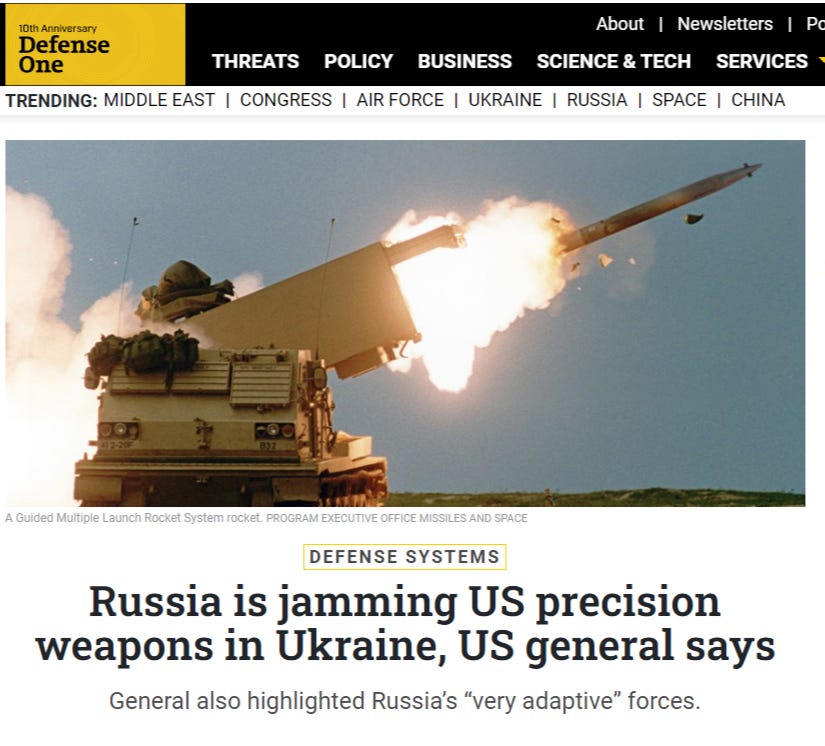
The tactical advantages that various U.S. precision munitions brought to Ukraine have been eroded by enemy jamming, the U.S. Army commander in charge of those efforts said Tuesday.
Jamming of some of “our more precise capabilities is a challenge,” said Lt. Gen. Antonio Aguto, speaking via video link from Europe at an event organized by the Army’s Program Executive Office for Command, Control and Communications-Tactical.
Recall that this is the general being dispatched by the US to Kiev in order to, as some reports claim, unofficially take over direct control of the conflict.
We’ve heard this all before, but the urgency of the new reports comes as a welcome reminder.
Aguto said the Pentagon needs to improve its arms and gear to be “resilient enough and flexible enough to be able to counter what our adversaries do...Within weeks or months of us employing something on the battlefield, our adversaries can find ways to either disrupt or counter some of these capabilities.”
The article mentions Russian GPS jamming which validates the information in this new X thread, which claims to show current ongoing GPS spoofing in the region:
It appears to suggest that Russian systems based near Sevastopol are jamming NATO recon flights near Romania—which is precisely where a raft of recent NATO ELINT flights have been reported; E-3 AWACs, RC-135s, etc.
A new video released by a Russian electronics warfare unit shows a myriad of AFU FPV drones being jammed out of the sky, giving us a small idea of this lesser-seen aspect of warfare:
Another article swings us back around to Avdeevka. It’s from UK’s The Times, and covers more of the 47th Brigade’s miseries in the embattled and god-forsaken city.
The article outlines the true strategic significance of Avdeevka for the surrounding region:
The war in Ukraine is at a critical moment. The fall of Avdiivka would mean Ukrainian forces fall back to the reservoirs of Karlivka and the heights at Ocheretyne. Karlivka supplies water to the remaining Ukrainian-held territory in the Donbas, with any battle there severely disrupting its flow. Seizing the heights at Ocheretyne, two miles away, would allow the Russians to begin razing Myrnohrad, a city of 50,000.
In fact, they highlight how the AFU may be forced back 20km, leading to the entire Donbass front’s collapse:
On the same day, Roman Svitan, one of the country's most respected military experts, warned that a Russian breakthrough at the town of Avdiivka could lead to "a 20-kilometer retreat" and "the collapse of the entire front" in the Donbass.
Holding Avdiivka, he added, was "not a political issue [referring to the fierce resistance at Bakhmut during the previous winter], but a purely military necessity".
Most saliently he points out above that unlike Bakhmut, Adveevka is a genuine strategically important city, conceding that Bakhmut’s defense entirely revolved around mere grandstanding for a Western audience in an ego and pride-driven effort to prove Russia couldn’t push the ‘mighty’ Ukrainians back.
The article goes on to sermonize on the importance of Avdeevka, and the psychological blow its loss would deliver. It segues into ammunition problems, as always:
“It’s a shitty situation,” Sausage said. The shell shortage forces soldiers like Sergeant Taras “Fizruk”, a 31-year-old mortar gunner, also from the 2nd Battalion, to make impossible life and death decisions.
“We had ten times more ammunition over summer, and better quality,” he said. “American rounds come in batches of almost identical weights, which makes it easier to correct fire, with very few duds. Now we have shells from all over the world with different qualities and we only get 15 for three days. Last week we got a batch full of duds.”
They go on to write that the AFU troops can’t simply fire on any Russian movements they see, but must conserve their ammo, waiting until a large enough Russian group has consolidated to warrant wasting a shot.
“But without ammunition we can’t. When it’s two or three soldiers I’m not shooting any more, only when it’s a critical situation, say ten guys close to our infantry, we will work. If our rounds aren’t the same weight, the next round will fly two hundred metres past the Russians. And then it’s too late.”
Not having the rounds to shoot, they even admit being forced to desperately fly unarmed drones at Russian troops simply to try to scatter them:
Rather than watch helplessly as smaller groups encroach on their infantry, his men sometimes resort to flying their unarmed drones at enemy troops, who temporarily scatter fearing they are about to have a grenade dropped on them.
They continue saucing up their Western audiences with the usual load, but are forced to make painful admissions:
The village holds, but it is bloody, gruelling work. The Russians seem able to absorb an endless amount of casualties, spurred on by fear of their own commanders. Ukrainian defenders are suffering too. American M113 armoured personnel carriers on the road from Avdiivka to Ocheretyne pull out a steady stream of casualties.
Do they really expect us to believe that the side with no ammo, using harmless drones as desperate warding tactic, is the one suffering least casualties? Recall the earlier commander’s confession: Russia had 30 artillery batteries to his 2 in his sector. Both articles admitted these AFU groups are limited to only a dozen or two shells per day now.
Nor is Russia sparing advanced aerial bombs:
“Ten days ago 32 KABs hit the city in a single day,” Vitaliy Barabash, head of the Avdiivka City Military Administration, said.
KABs are Russia’s precision-guided, but non-winged/glided, bombs, whose first claim to fame was in Syria.
On the heels of this article come announcements today of more Russian breakthroughs in Avdeevka. Most notably, some reports claim Russia has now either fully captured Stepove to the north, or most of it. Meanwhile on the south they’ve also begun pushing past the earlier-captured Industrial Zone into the actual town proper itself.
Meanwhile, Marinka has pretty much fully fallen after years, major advances are being made all over the Artyomovsk/Bakhmut front, as well as recaptures of Ukrainian positions from the counteroffensive in Zaporozhye. The AFU is now steadily losing territory on literally every single front, and the scary part—for them—is that there’s no “hope” or magical ray of light on the horizon. The munitions simply don’t exist in the numbers they require.
Meanwhile, Russia continues to pump massive amounts of equipment to the front, here’s the latest batch from Rostec, which includes their final factory-fresh BMP-3 tranche of the year:
Hitler once said if he knew the amounts of armor Russian factories could pump out, he would have never invaded. Looks like the 4th Reich mini-Fuhrer will learn the same lesson.
Speaking of armor groupings, earlier in the week came a video showing what appeared to be a large Russian armor exercise, reportedly on the Sumy border:
It goes in line with the earlier discussion about the large amounts of Russian troops still outside on the sidelines. But most interestingly was a completely uncorroborated report from Russian channel Masno claiming Russia has as many as 50-150k troops on the opposite side of the Sumy border:
👆👉 With reference to this being apparently near Sumy (On the Russian side of the border)...
If you listened to my voice message a few months ago, there were apparently +- 50 000 Russian stationed not far from Sumy.
Last week I heard this number had increased to 150 000.
We wait and see.
Very speculative but something to keep an eye on.
A final article from Washington Post sounds the most apocalyptic siren of all:
The language Hockstader uses in this piece is simply eye-watering to behold. He’s clearly hamming it up for the circus, laying on the maudlin fearmongering as thickly as possible.
A few choice samples:
Kyiv is at risk of losing — and suffering unimaginable carnage and consequences.
“It would be a way back to the darkest times of the war,” Nico Lange, a German security expert on Ukraine, told me.
…it would be as much a strategic disaster for the United States and its NATO allies as a tableau of terror for Ukraine. Dual cataclysms, equally stark, played out on different timetables.
Dial up that fear! Those are rookie numbers!
You ready for the big one?
Oh my! He must have stolen Netanyahu’s playbook.
That grim scenario would be a staggering blow to Western prestige and credibility, revealing that pledges to back Ukraine for “as long as it takes” were empty.
This is schlock of the highest order, does he think he’s penning a comic book script?
Well, at least the infantile article did manage to make a big admission: that Ukraine stands to completely collapse and capitulate fully to Russia, if aid is totally cut off.
Lastly, I’m often asked, like in the most recent mailbag, about the potential for civil war as well as secession in America. We know that the elites appear to often signal their intentions through the CIA-controlled Hollywood propaganda organ—either that or it’s some form of hyperstitious self-fulfillment.
Either way, in light of that the new trailer for ‘Civil War’ is quite interesting. Even if it’s just Hollywood writers reacting to their own perceived fears, it’s fast becoming clear what is on America’s conscience.
It ends with the poignant slogan: All Empires Fall.
Predictive programming, or just America’s division-driven dark neurosis rearing its head—what do you think?
Your support is invaluable. If you enjoyed the read, I would greatly appreciate if you subscribed to a monthly/yearly pledge to support my work, so that I may continue providing you with detailed, incisive reports like this one.
Alternatively, you can tip here: Tip Jar


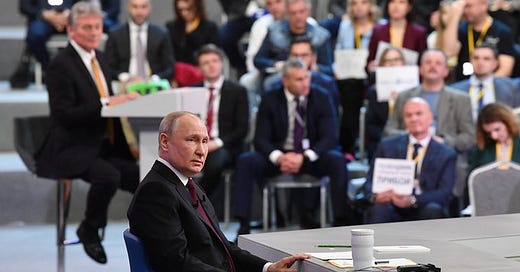


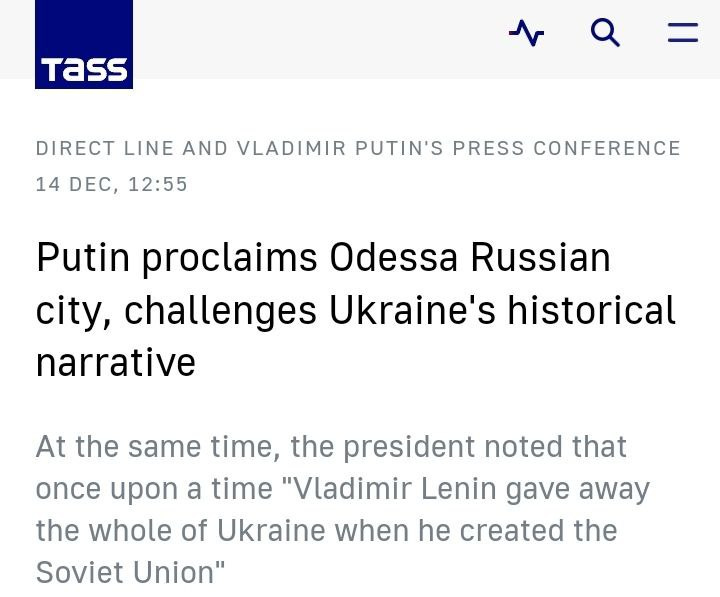
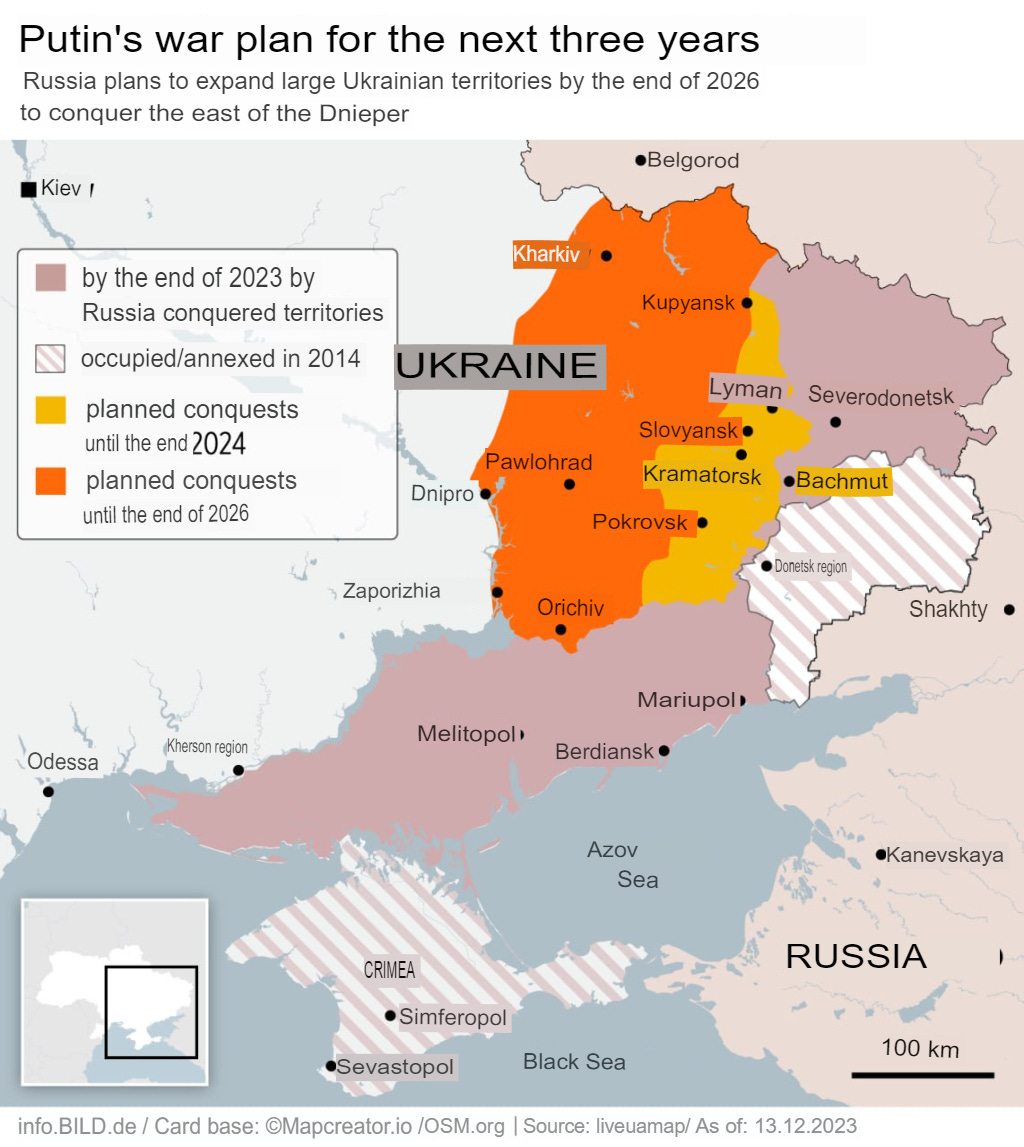

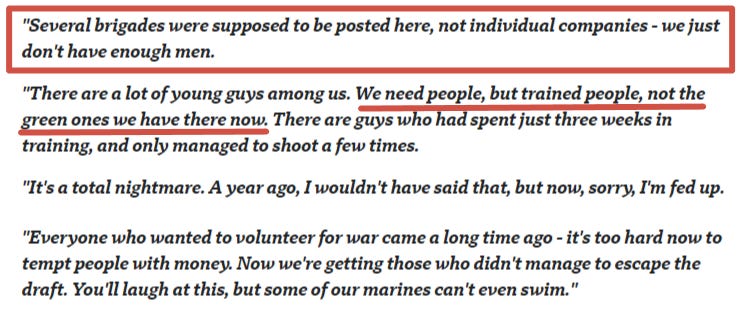



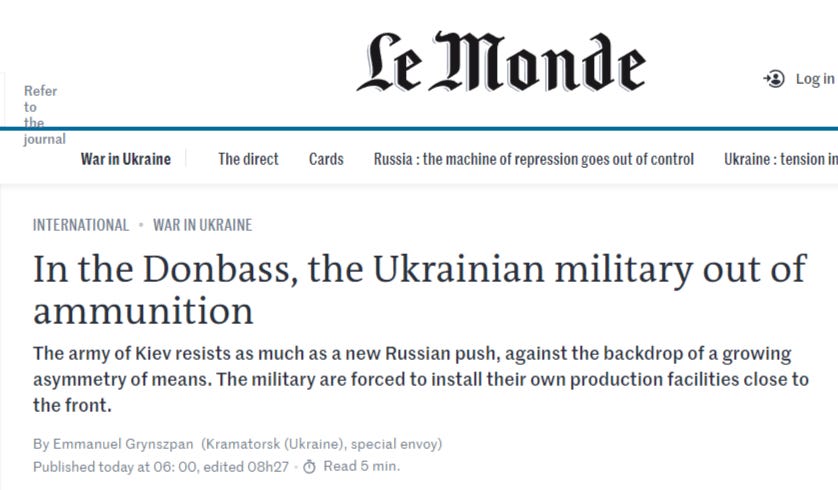
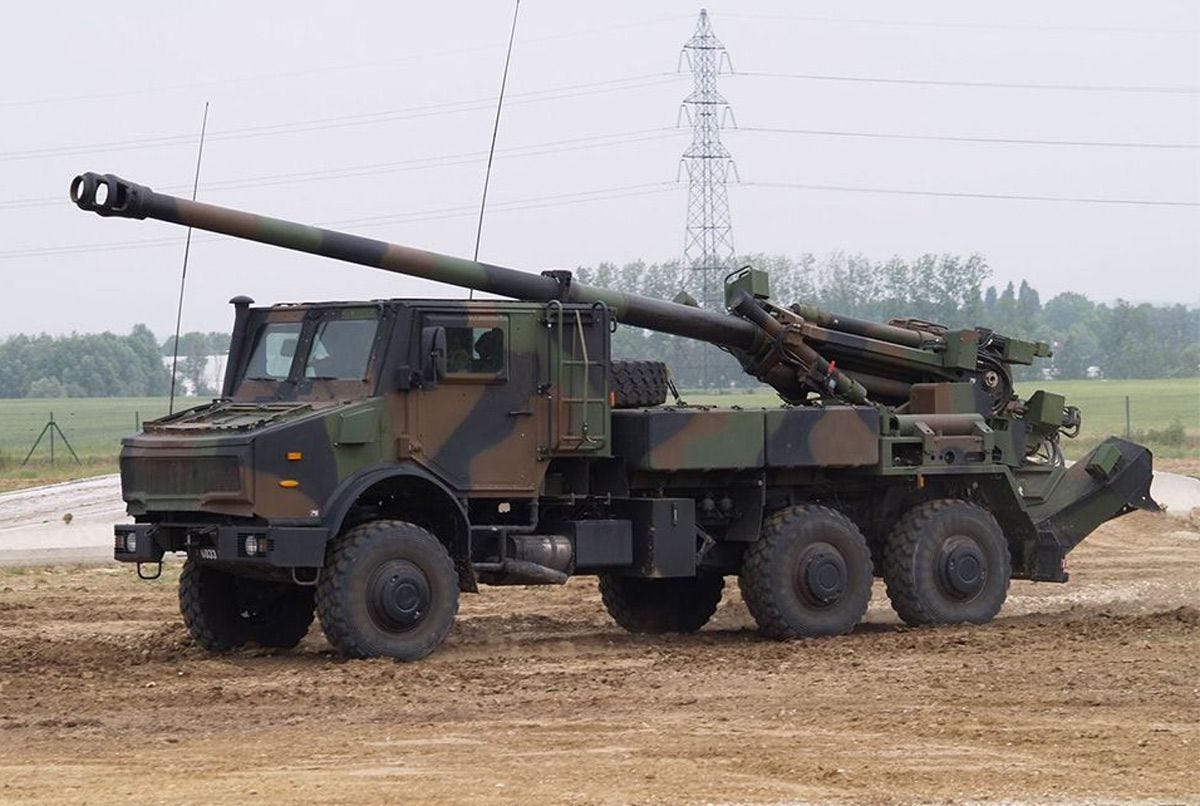

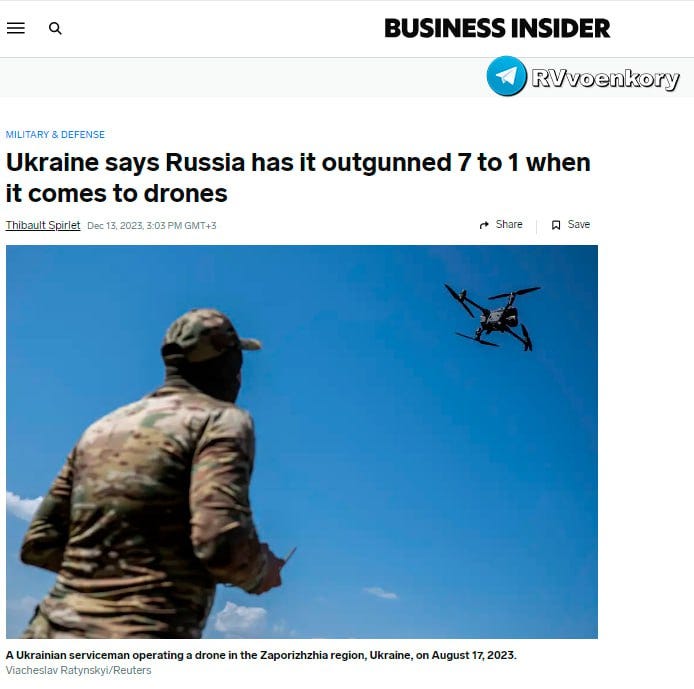

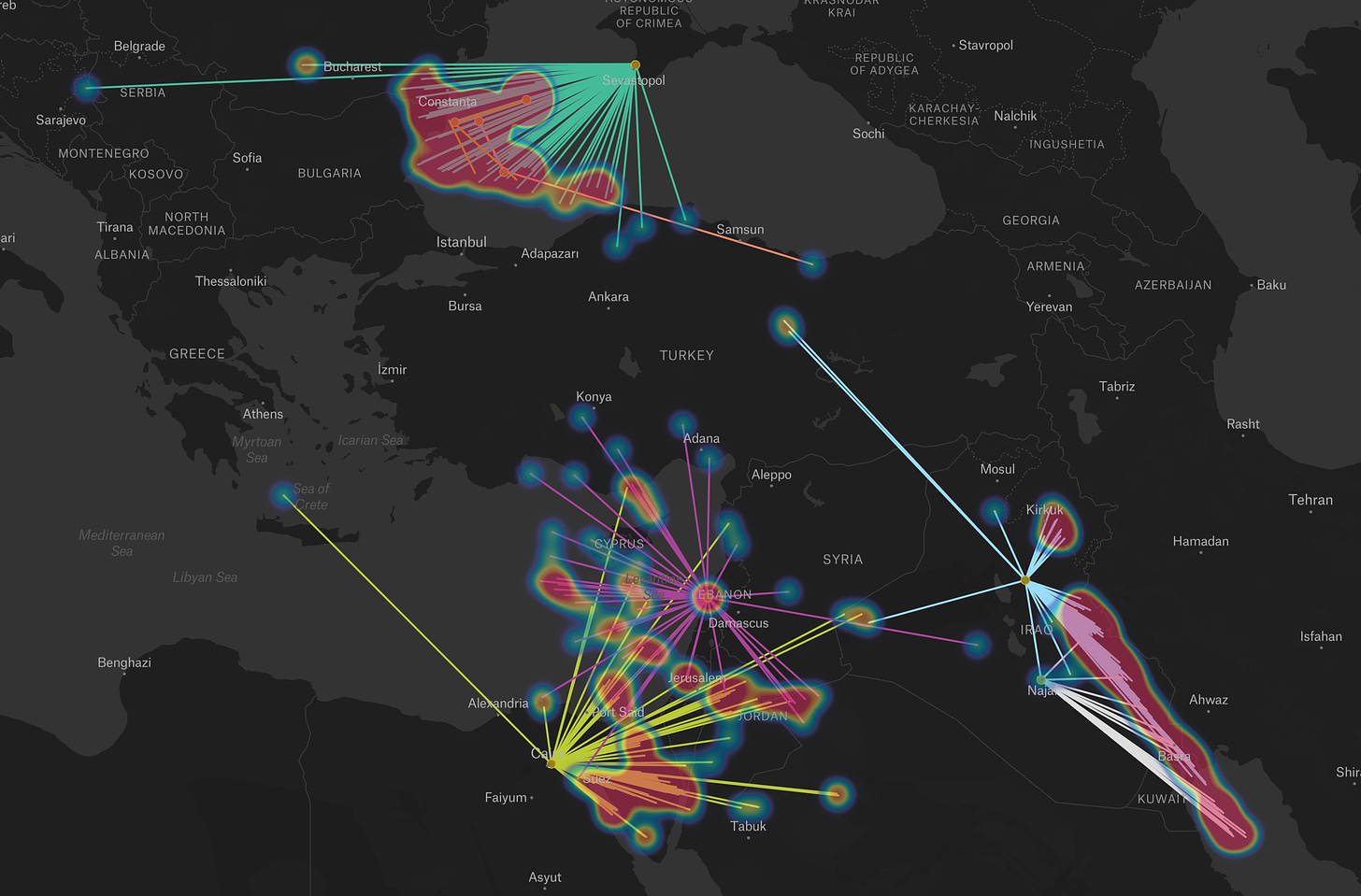

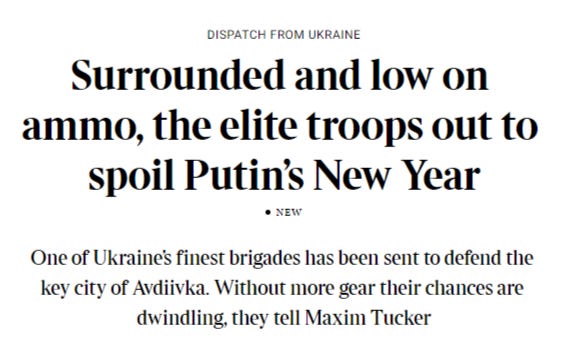

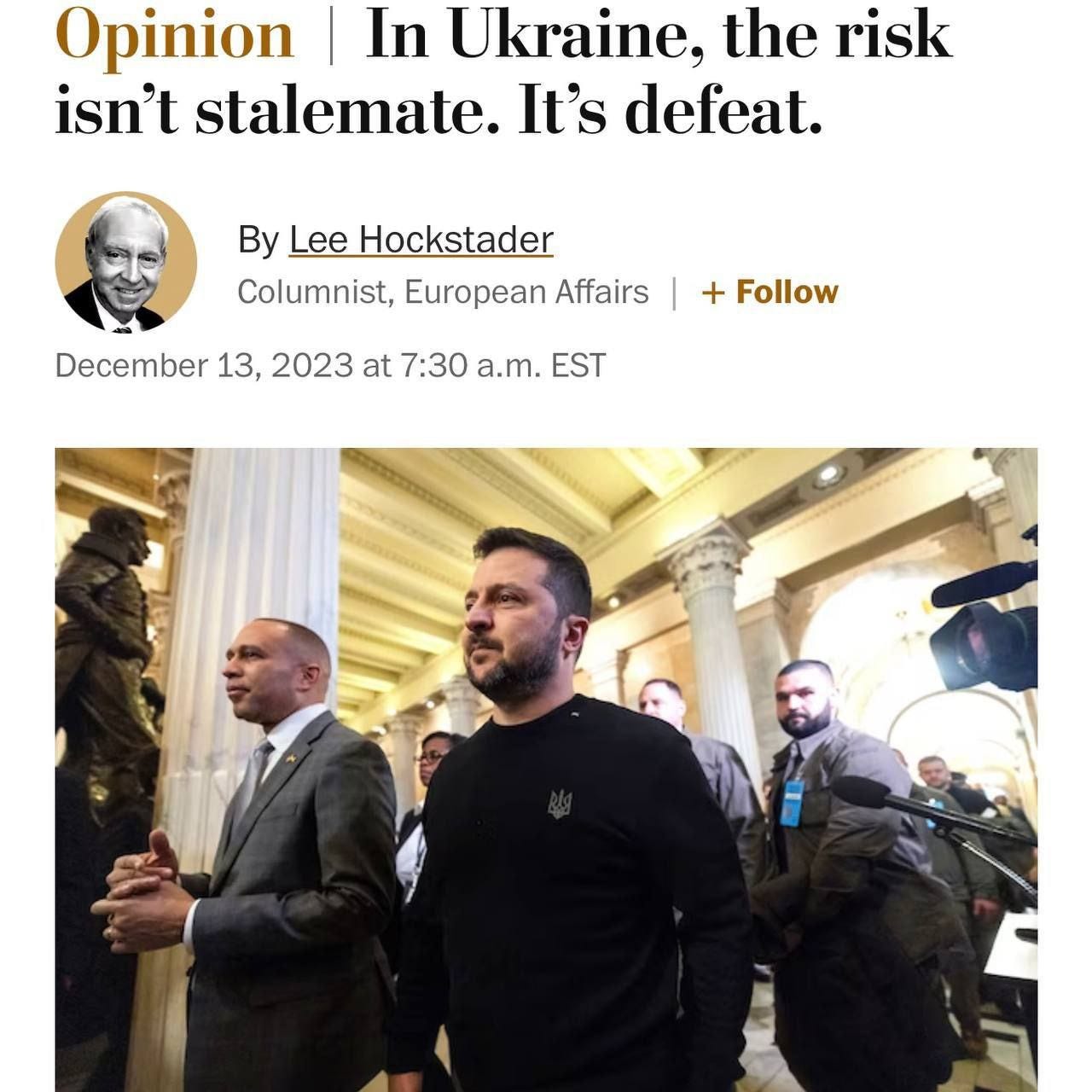
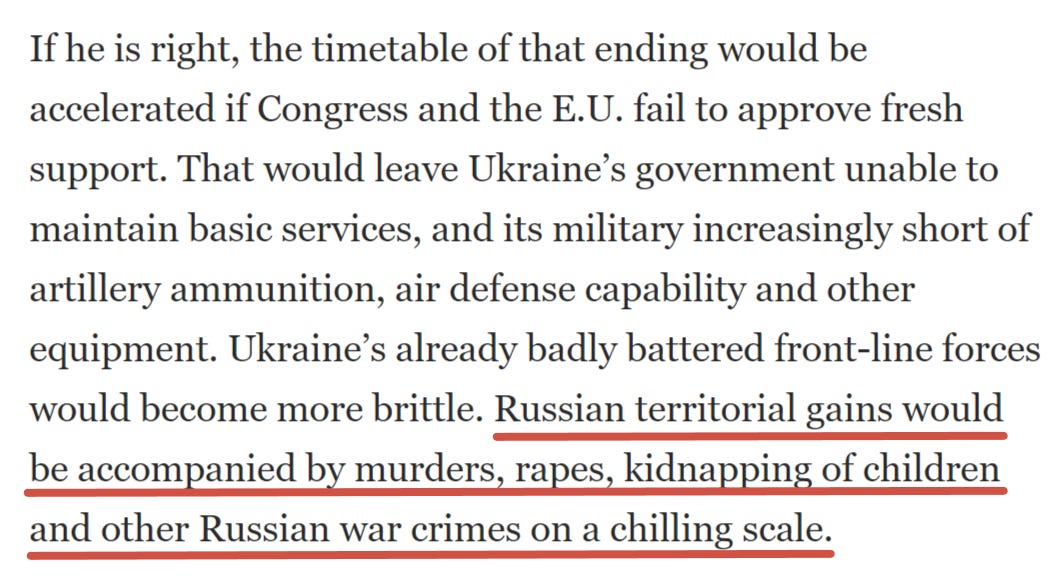

15 Dec 2023 The Economist joins in: Sanctions are working, or even if they are not an expanding economy is a disaster for Russia
https://www.economist.com/finance-and-economics/2023/12/10/vladimir-putin-is-running-russias-economy-dangerously-hot/
Success is failure
‘Look closer at Mr Putin’s wartime economy, however, and it becomes clear that it is dangerously overheating. Inflation in the services sector, which includes everything from legal advice to restaurant meals, is exceptionally high. The cost of a night’s stay at Moscow’s Ritz-Carlton, now called the Carlton after its Western backers pulled out, has risen from around $225 before the invasion to $500. This suggests that the cause of inflation is home-grown.’
‘Look closer’! The one fact is fact free – impacts westie journalists using dollars but no one else, no wonder the Economist journo is complaining
‘The problem is that the Russian economy cannot take such rapid growth.’ The growth referred to is 3%
“Unemployment, at less than 3%, is at its lowest on record, which is emboldening workers to ask for much higher wages. Nominal pay is growing by about 15% year on year. Companies are then passing on these higher costs to customers.”
Low unemployment and higher wages for workers are bad
Next up - Western economies are so strong they benefit from recession
I suspect a primary reason the west might choose to keep the conflict "active" is to mask the possibility President Putin/Russia have no desire to take on the burden of trying to control Europe. As long as the conflict is in play, the narrative of Putin wants to rule the world still sells; at least to the fools among us.